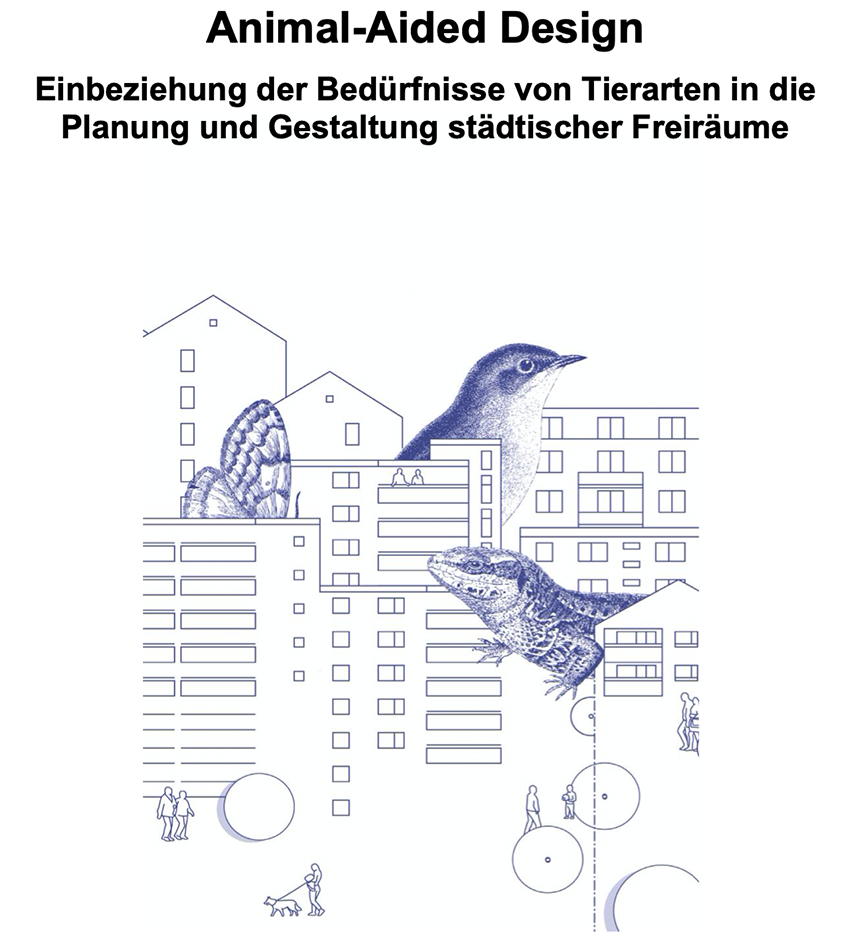After successful completion of the course, students are able to recognise the potential of biodiverse educational spaces and to set impulses to carry their importance into society. In doing so, positive, inspiring and playful ways to for children and young people to influence the designability of built environment are shown, in which the coexistence with "all" living beings actually means cooperation.
Art and artistic design processes can function here as a strategy for visualising different worlds of experience and testing enabling spaces.

The aim is to explore and artistically present how species-rich vegetation communities, wildlife and insects can become an essential part of the anthropogenic school space through play, observation and research. We take joint responsibility for a change in building culture and offer children and young people the opportunity to become part of this development in a school setting.
In the spirit of the motto "Serious Fun" (cf. AzW Ausstellung, M. van der Hoorn 2022) - "Those who take part in a game become part of the game themselves" - opportunities and participation processes for serious, forward-looking co-responsibility are to be provided through action and play.
After analysing and researching the school environment (BiB-Lab Bildungsräume 1100 Wien), the needs of a species are considered together with those of the students. Conflicts, differences or overlaps are not obstacles but tools and challenges on the way to gained empathy and connection. With this, considerations and design ideas for Living Labs, Animal-Aided Design and Adaptive Architecture will be made and developed.
“Architecture, landscape architecture, all the professions that are using the urban spaces, they also can be producers of urban habitat,” Hauck says. “You can create it on a microscale on artificial areas like roofs or in the courtyards of houses Every space is more or less a potential area that you can develop into a habitat.” (Creature Comforts, T. Hauck 2019)
To this end, we look forward to input from Thomas Hauck (Animal-Aided Design) and Sibylle Bader (Wanderklasse).
Project work: research, participatory observation, individual and group work, teaching input, presentations and teaching talks
Date in each case DO 9:00 -11:00 a.m.
INTRODUCTION: DO 09.03.2023; 9:00 - 11:00 a.m. Seminarraum AD 03-01 - Stiege 5 / 3. Stock - Hauptgebäude
Im März: Seminarraum AD 03-01 (Karlsplatz 13). Dieser Raum ist von Stiege 5 bzw. 10 gut erreichbar und ist im 3. Stock genau im Eck zwischen den beiden Stiegen.
Ab April ist der Treffpunkt das BiB-Lab - Grätzl-Labor: Feldforschung in 1100 Wien | Alma-Rosé-Gasse 2 | Kleines EKAZENT – von dort aus untersuchen wir die Bildungslandschaften (Schulen und Umgebungen).
- Cooperation and attendance
- Impulsive visual representation :
The results of observation, thinking and design are made visible in two corresponding pictures - as an artistic impulse and/or speculative exaggeration that should lead to a critical discourse in public space.
Interest in biodiversity, climate change adaptation, art, science, education and architecture as a form of communication;
Previous knowledge
- oimage composition and visual representation
- experimental architecture (preferable)